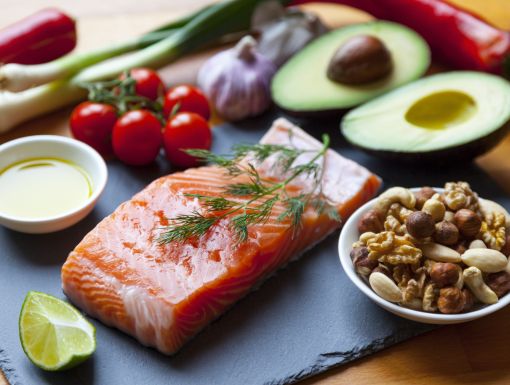
What is a Healthy Diet for Diverticulitis?
What is diverticulitis?
Diverticulitis begins when small pouches develop in the lining of your digestive system. These small pouches, called diverticula, are mostly found in the lower part of the large intestine and the colon. Diverticula are common, especially after the age of 40, and are not cause for concern on their own. However, when these pouches become inflamed or infected, it can cause severe abdominal pain, fever, nausea and changes in your bowel movements. This condition is known as diverticulitis.
What are the symptoms of diverticulitis?
The primary symptom of diverticulitis is persistent abdominal pain. This pain usually occurs in the lower left side of the abdomen but can occur on the lower right side of the abdomen, particularly in people of Asian descent. Other symptoms include:
- Nausea and vomiting
- Fever
- Tenderness and abdominal pain
- Constipation or diarrhea
If you ever experience persistent abdominal pain, especially with a fever and constipation or diarrhea, you should consult your doctor immediately.
What are the risk factors associated with diverticulitis?
- Age – The chance of developing diverticulitis increases with age
- Smoking – Smokers are more likely than nonsmokers to be diagnosed with diverticulitis
- Obesity – Carrying extra weight can increase your risk of developing diverticulitis
- Lack of physical exercise – Moderate levels of exercise can lower your risk
- Medications – Some medications, such as steroids, opioids and nonsteroidal anti-inflammatory drugs, like ibuprofen, can put you at an increased risk
- Diet – Diets low in fiber and high in animal fats may increase your chances of developing diverticulitis
What kind of diet is good for diverticulitis?
Diet is a large component of diverticulitis and many experts believe that a high fiber diet can help prevent and control diverticulitis symptoms. This is because fiber helps stool pass more easily through the colon and reduces stress on the digestive tract.
Recommendations for dietary fiber intake are as follows:
- Women younger than 51: 25 grams of fiber/day
- Women older than 51: 21 grams of fiber/day
- Men younger than 51: 38 grams of fiber/day
- Men older than 51: 30 grams of fiber/day
Foods high in fiber include whole-grain bread, pasta and cereal, as well as beans, fresh fruits and vegetables.
You can meet the daily recommendations for fiber in a few easy ways:
- Welcome the whole grains
When looking for whole-grain bread and pasta, make sure to check the ingredient list. Whole grain should be the first or second ingredient. Products that carry the label “100% wheat” or “multigrain” are usually not whole grain. - Choose (the right) cereals
Breakfast cereals can be a great source of fiber, but they can also be loaded with unnecessary sugar. Look for options with less than 6 grams of added sugar per serving. Another easy tip is to avoid cereals with sugar listed in the top three ingredients – the farther sugar is down the ingredient list, the better. - Bring on the beans
Beans are a great source of fiber and plant-based protein. Try these recipes to incorporate beans in some unique ways.
Fresh fruit is a great way to get a little extra fiber in your diet. Fruit can be eaten on the go as part of your morning meal, lunch or a quick snack.
Go for the greens
Try to include several servings of vegetables in your meals each day. Including a vegetable at lunch, dinner and in your snacks in between can be a great way to incorporate fiber.
Mix it up with flaxseed
You can also add fiber to your diet by adding a tablespoon of ground flaxseed to smoothies, soups and casseroles.
In addition to helping prevent or alleviate diverticulitis, added fiber can decrease blood sugar, reduce cholesterol and even prevent colon cancer. If you are having trouble consuming the recommended amount of fiber per day, your doctor may also recommend a fiber supplement such as Metamucil.
Previously, it was thought that those with diverticulitis should avoid nuts, seeds and popcorn as it was believed that these foods could get stuck in the diverticula pouches and cause inflammation. However, there is no evidence that these foods cause problems for those with diverticulitis. In terms of foods to avoid, if you are currently having a diverticulitis attack, your doctor may recommend following a clear diet such as broths, sports drinks and popsicles to allow your digestive tract time to heal. As with any diet, you should speak to your doctor before changing your eating habits.
Are you experiencing stomach pain? Find a primary care doctor at Ochsner.


